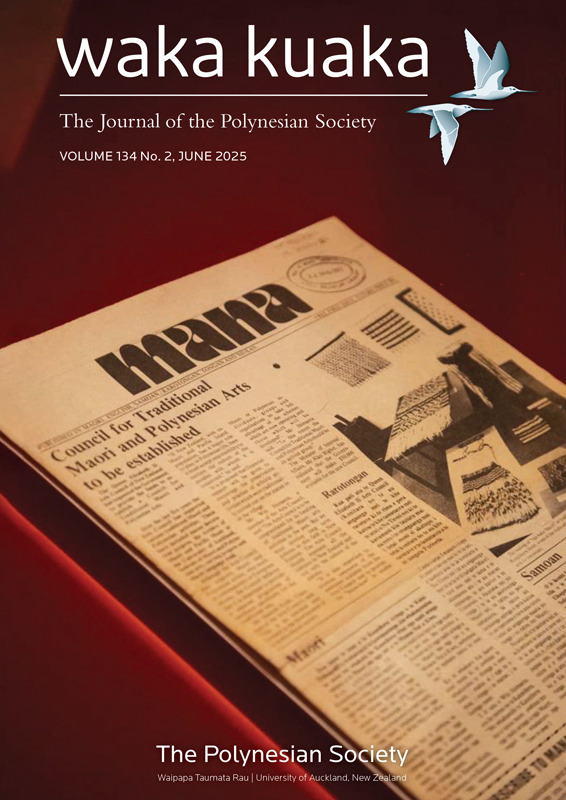Meteoric carbonate deposits at Fale o le Fe‘e archaeological site, Sāmoa
Keywords:
tufa, volcanic island, indigenous knowledge, hydroclimate, PacificAbstract
A carbonate outcrop measuring greater than 1 m across its longest axis and weighing up to 1 tonne was identified adjacent to a stream channel at approximately 464 m elevation in the central volcanic rift zone on ‘Upolu Island, Sāmoa. This outcrop is in the upper Vaisigano River catchment approximately 9.5 km inland of Apia, and about 50 m upstream of the ancient cultural site Fale o le Fe‘e. The presence of carbonate deposits in this predominantly volcanic area has previously been reported in Samoan oral tradition, early missionary reports and several scholastic campaigns dating back to 1845. However, their origin has been enigmatic in that several of these information sources interpret a marine origin, with only two accounts concluding on a terrestrial origin. In this paper, preliminary carbonate isotope analysis results carried out on i) fresh samples taken from the outcrop, ii) transported carbonate cobbles found downstream of the deposit, and iii) coral from the coast are presented to show that the deposit is a terrestrial freshwater tufa formed through in-situ meteoric processes. The likely formation processes of this deposit and implications within the cultural context at Fale o le Fe‘e are assessed. In addition, the potential significance of these findings within the Samoan geological context and their potential for understanding long-term hydroclimatic changes in Sāmoa are discussed, including directions for future research.
Additional Files
Published
How to Cite
Issue
Section
License
Copyright © 2025 by the Polynesian Society (Inc.)
Apart from any fair dealing for the purposes of private study, research, criticism, or review, as permitted under the Copyright Act, no part of this publication may be reproduced by any process without written permission.
Inquiries should be made to:
Dr Marcia Leenen-Young, Editor
The Polynesian Society
c/o School of Māori and Pacific Studies
The University of Auckland
Private Bag 92019, Auckland
New Zealand
email: m.leenen@auckland.ac.nz


